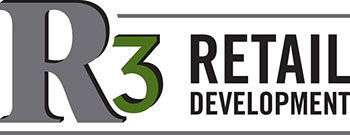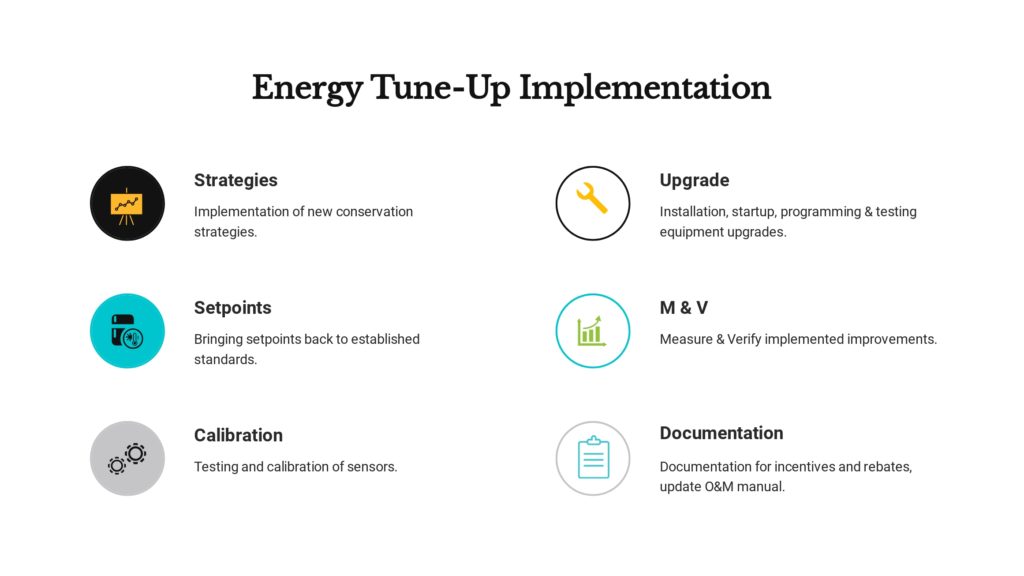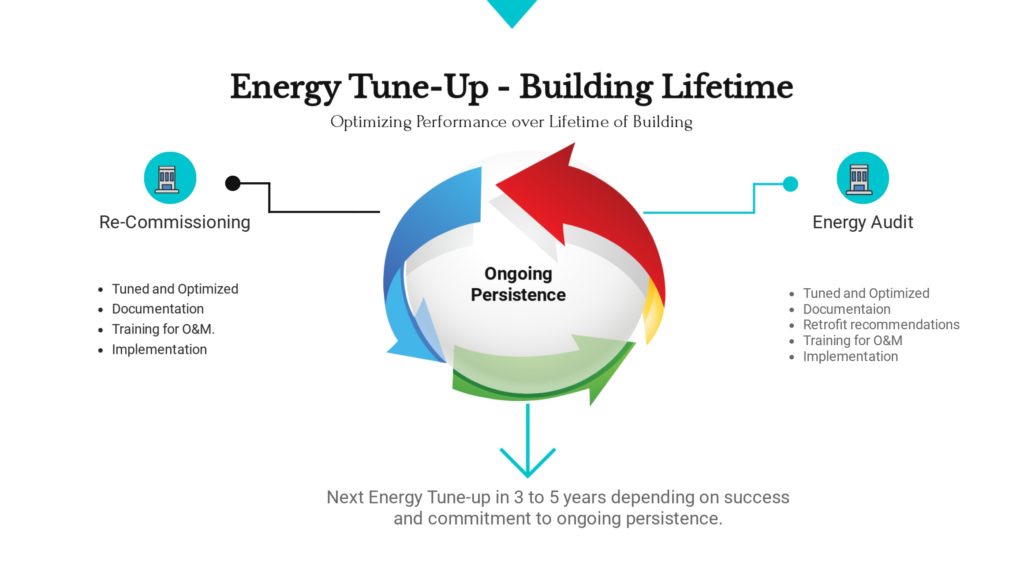An energy tune-up is a fantastic way to bring your systems back into alignment with your Energy Management goals and strategies. In our previous blog post, Sustainable Energy Efficiency, we talked about several ways the integrity of energy management system degrades over time. If you implemented your EMS / BMS several years ago, it may be time to think about an energy tune-up.
The Goals for an Energy Tune-up
- Conserve Energy
- Operational & Maintenance Savings
- Improved Equipment Performance
- Customer & Staff Comfort
- Ensure Product Integrity
Return on Investment
The return on investment for an Energy Optimization or Energy Tune-Up averages $0.50 to $2.00 per square foot. There are rebates available through utility companies and government programs that can help offset the costs for re-commissioning. The average payback time is as little as 3 months up to 2 years, operational corrections and control measures have the shortest payback times. The annual energy savings range from 9 to 15% or around $1.15 per square foot savings. The success of a comprehensive energy tune-up directly correlates with how well you cover the integrated equipment, systems, sequences, and processes.
The Five Phases of an Energy Tune-Up
There are five phases for an Energy Tune-Up. Planning, Investigative, Implementation, Hand-Off and Persistence. (Sustainable Building Operation and Maintenance Guidelines, 2008) Click the link “phases” above for infographic of the phases.
Planning
In the Planning phase, we set the goals for the project, define operational requirements, and perform an initial site walk-through. It is in this phase that we interview key staff, review utility billings and get a high-level view of the existing controls system. This information drives the creation of the Energy Optimization plan. Kick off the project with a meeting to share and discuss the plan.
Investigate
In the investigative phase, we gather all the information necessary to recommend remedies and new opportunities for savings. During this phase we verify:
- Alarm set points & delays
- Existing energy strategies
- Compressor sizing and naming
- Board and point list accuracy
- System mapping and naming
- Controls sequences
- VFD operational levels
Identification and resolution of deferred and straightforward maintenance can mean the difference between just having a site survey and having an actual Energy Tune-Up.
During the Investigation phase, we analyze the data gathered using a variety of analysis tools to identify causes and solutions. The team presents and discusses the findings and recommended corrective actions to finalize the list of operational improvements.
Common corrective actions include:
- Mechanical repairs & adjustments
- Control Programming measures
- Energy Saving Strategies such as
- Floating head and floating suction
- Lighting setback controls
- HVAC setback controls
- Equipment Upgrades
- LED Lighting
- Adding doors to Refrigeration
- HVAC supply fan motors
- Variable Frequency Drives
- Comfort and/or Water Heat Reclaim
- Floating head and floating suction
For more information on other common corrections take a look at Facilities Net article, 10 Ways BAS Optimization Improves Performance, Efficiency by Rita Tatum. The Investigative phase includes research of potential rebates and incentives to assist in selecting improvements for implementation. The findings in the investigative phase provide an opportunity to validate or edit items as needed from the original energy tune-up plan.
Two areas often requiring plan changes include communications and training. See our recent blog Sustaining Energy Efficiency, for more information on the importance of communications and training for successful projects. The investigative phase may identify specific areas requiring a different or enhanced approach for communications or the expansion of the training component for additional focus areas.
Implementation
The nuts and bolts of an Energy Tune-up happen in the implementation phase.
Hand-Off
Common elements of the hand-off phase include the final report, training and the close-out meeting. Where some projects miss the mark is the failure to include adequate staff and service vendor education and training and the development of an operational persistence plan. Staff and service vendors alike need to participate in training and education.
Education centers around explaining the strategies and the purpose of the changes implemented. Sharing the logic and purpose behind the system changes empowers front-line users who interact with the systems daily to respond to issues appropriately and help maintain system integrity over time. Incorporating operational persistence strategies into the preventative maintenance plan helps keep improvements optimized over time.
 Persistence
Persistence
A good persistence plan includes some type of fault detection and monitoring of system conditions. Beyond identifying potential issues through monitoring having an established protocol for responding to alarm or condition data is essential. Read more about cost-saving measures when troubleshooting alarms. If you are new to monitoring your equipment data, developing the response protocol may seem daunting.
The persistence plan takes your energy tune-up to the next level strengthening your ability to move from a reactive to a proactive O & M model. Good persistence plans include periodic O & M reviews for the systems most likely to degrade over time and a plan for continual energy consumption monitoring.
The next formal Energy Tune-up depends on several factors; use, layout or system changes combined with mechanical or operational issues. Things to consider when deciding if it is time for another energy tune-up include:
- Change in utility consumption – if you see more than a 10% increase in consumption over previous years, it is probably time for an energy tune-up.
- Increase in customer or staff comfort complaints
- Change in operation hours
- On-going issues
- Knowledge of controls programming changes bypasses or overrides to resolve an issue “quickly”
- Equipment upgrades / changes
“Just as you wouldn’t drive your car for five years without replacing belts, filters, fluids or spark plugs, neither should you operate a complex building for years without a tune-up. A building is, after all, a machine with moving parts intended to work together as a system and after a time, systems deteriorate if left alone.” Wayne Robertson: Energy Efficiency FacilitiesNet
References
Poulos, J. (2007). Existing Building Commissioning. ASHRAE Journal pages 66-78.
Robertson, W. (2011, 7 1). FacilitiesNet Energy Efficiency. Retrieved from FacilitiesNet: https://www.facilitiesnet.com/energyefficiency/article/Retrocommissioning-vs-Energy-Audit–12569
Sustainable Building Operation and Maintenance Guidelines. (2008, March). Retrieved from www.tru.ca: https://www.tru.ca/__shared/assets/Sustainable_Building_Operation_and_Maintenance_Guideline33420.pdf


 Persistence
Persistence